OUTCROP
Newsletter of the Rocky Mountain Association of Geologists

Platinum Sponsor Gold Sponsors





Silver Sponsors





















Newsletter of the Rocky Mountain Association of Geologists
730 17th Street, B1, Denver, CO 80202 • 720-672-9898
The Rocky Mountain Association of Geologists (RMAG) is a nonprofit organization whose purposes are to promote interest in geology and allied sciences and their practical application, to foster scientific research and to encourage fellowship and cooperation among its members. The Outcrop is a monthly publication of the RMAG.
PRESIDENT Ben Burke bburke158@gmail.com
PRESIDENT-ELECT Mike Tischer mtischer@gmail.com
1st VICE PRESIDENT Ronald L. Parker parkero@gmail.com
1st VICE PRESIDENT-ELECT Lisa Wolff lwolff@bayless-cos.com
2nd VICE PRESIDENT Matt Bauer matthew.w.bauer.pg@gmail.com
2nd VICE PRESIDENT-ELECT
Jason Eleson jasoneleson3@gmail.com
SECRETARY Sandra Labrum slabrum@slb.com
TREASURER
Anna Phelps aphelps@sm-energy.com
TREASURER ELECT
Holly Lindsey holly@energyfunders.com
COUNSELOR
Steve Crouch scrouch@whiteeagleexploration.com
Rates and sizes can be found on page 35. Advertising rates apply to either black and white or color ads. Submit color ads in RGB color to be compatible with web format. Borders are recommended for advertisements that comprise less than one half page. Digital files must be PC compatible submitted in png, jpg, tif, pdf or eps formats at a minimum of 300 dpi. If you have any questions, please call the RMAG office at 720-672-9898.
Ad copy, signed contract and payment must be received before advertising insertion. Contact the RMAG office for details.
DEADLINES: Ad submissions are the 1st of every month for the following month’s publication.
The Outcrop is a monthly publication of the Rocky Mountain Association of Geologists
DESIGN/LAYOUT: Nate Silva | nate@nate-silva.com
EXECUTIVE DIRECTOR Bridget Crowther bcrowther@rmag.org
OPERATIONS ASSISTANT
Kimberly Burke kbure@rmag.org
LEAD EDITOR Nate LaFontaine nlafontaine@sm-energy.com
CONTRIBUTING EDITORS
Elijah Adeniyi elijahadeniyi@montana.edu
Marlee Cloos marlee.cloos@bpx.com
Danielle Robinson danielle.robinson@dvn.com
WEDNESDAY NOON LUNCHEON RESERVATIONS
RMAG Office: 720-672-9898
Fax: 323-352-0046 staff@rmag.org or www.rmag.org
June 4 - 8
July 1 5
Aug 1 21 3
5 days/4 nights on the Lower San Juan with Fort Lewis on the Water Float through goosenecks, visit dramatic geological and archaeological sites Registration open!
A 2+ mile walking tour of some of downtown Denver’s iconic stone buildings, many of which are constructed with rock from Colorado quarries See Yule Marble, Pike’s Peak and S Beaver Creek Granites, and more!
On this unique field trip you'll see more impact craters in one day than anywhere else on Earth. Led by Kent Sundell, geology instructor at Casper College, who has studied and written extensively on this crater field, the Douglas Impact Site.
Sept 9
Tour of the historic Beulah Quarry, source of Colorado Capitol's most unique building stone, led by Quarry owner Ken Balleweg Also included is a visit to the Steelworks Center of the West in Pueblo.
Sept 3 0
Grab your bike and join Dr Donna Anderson on a tour of the geology of the Golden area. Trip is 9 miles on a bike path.
Registration for trips will generally open one month before the trip date. Check www.rmag.org for updates and details.

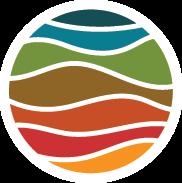
Dates subject to change View website for additional info

2023 RMAG Summit Sponsorship Packet
Lead Story: A Frontier of Fossils, New Trails, Footprints, and Bones reveal an ancient Cretaceous Ecosystem in southwestern Montana.
President’s Letter
Hybrid Lunch Talk: Walter Nelson
Hybrid Lunch Talk: Emilie Gentry
Member Corner: Jay LeBeau
In The Pipeline Welcome New RMAG
2 RMAG Summit Sponsors
11 On-the-Rocks: Stories in Stone–The Rocks That Built Denver
19 On-the-Rocks: Stories in Stone, Colorado Icons
21 On-the-Rocks: Paleozoic Impact Crater Field

27 RMAG Night at Coors Field
29 RMAG Golf Tournament
31 Join Our Mentorship Program
17 RMAG Monthly Happy Hour
34 WANTED: Colorado Rocks!

The Centennial Valley, taken from the Centennial Mountains.
 Newsletter of the Rocky Mountain Association of Geologists
Newsletter of the Rocky Mountain Association of Geologists


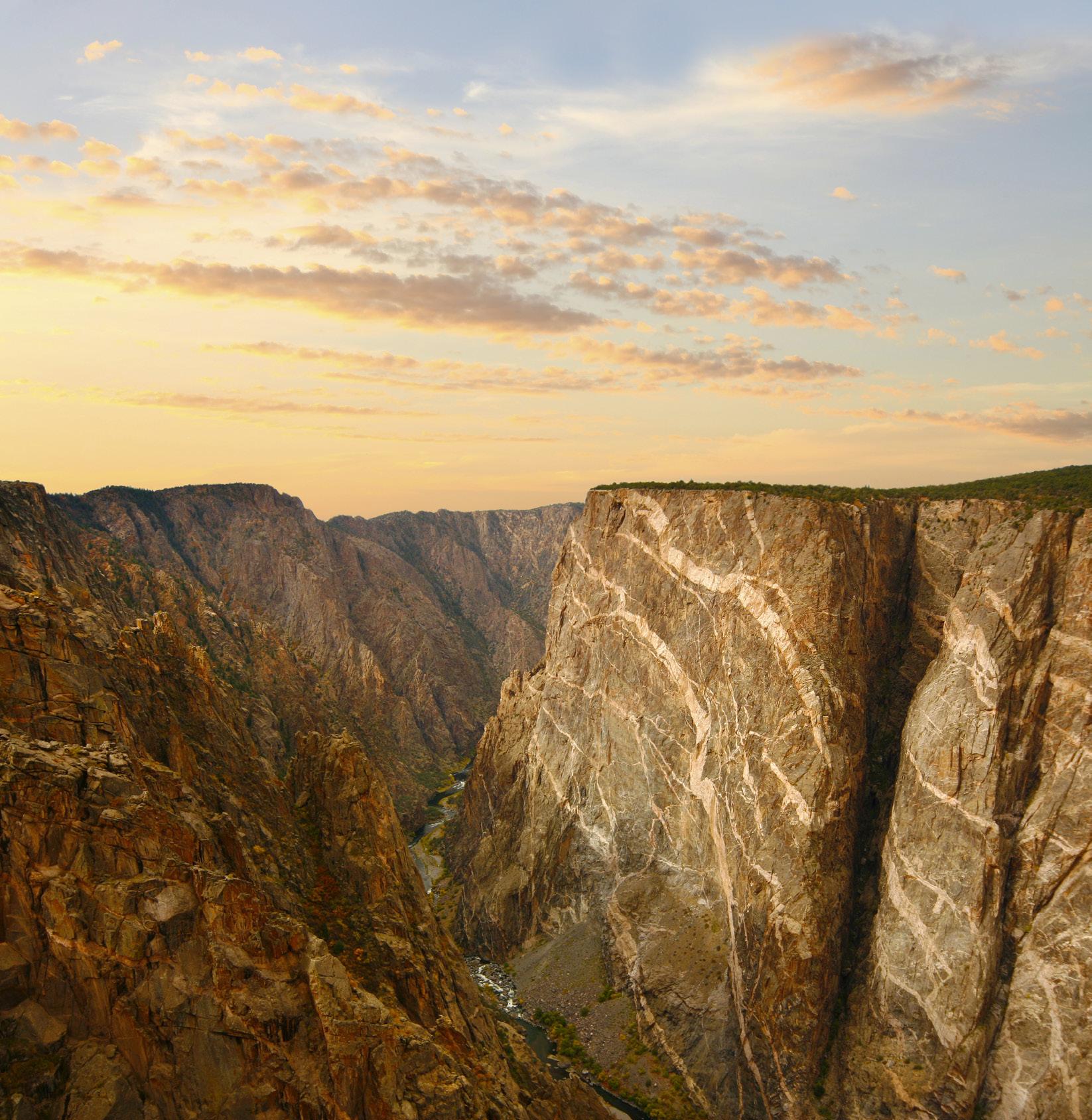
October 20, 2022
Geoscience Community:
We greatly appreciate every Summit Sponsor and Event Sponsor that has contributed to RMAG over the last year. We could not exist without your support.

In RMAG’s 100th year we have emerged from the global pandemic to return to many of RMAG’s beloved programs, and we created new programing to meet the needs of our members and the greater geoscience community. Monthly luncheons returned to in-person, with the addition live streaming. The 2022 Golf Tournament sold out bringing over 100 golfers out for a great afternoon together. The Powder River Basin Symposium offered two days of talks and core viewing to a packed room with attendees from across the country. Members young and old celebrated RMAG’s past and future at the 100th Anniversary Party. But that’s not all, the Diversity and Inclusion Committee in conjunction with Education Outreach attended numerous community outreach events from Girl Scout Days at Dinosaur Ridge to the Juneteenth Festival, sharing our members love of the geosciences with the next generation. Short courses were held both in person and online creating educational opportunities for members in Denver and across the country.
2023 brings new opportunities for RMAG. Your sponsorship dollars will help RMAG bring to fruition the 2023 North American Helium Symposium, an exciting Field Trip season, and a dynamic list of luncheon speakers on topics ranging from the state of the industry to the Williston Basin to geothermal energy storage. These dollars will allow RMAG Members to impact the next generation at outreach events throughout the community and provide opportunities for the geoscience community to connect and build their network. We’re looking forward to seeing everyone on a more regular basis.
Your sponsorship dollars support our excellent publications including the monthly Outcrop newsletter and the quarterly Mountain Geologist journal We recognize your financial commitment with in-person signage, website and publication advertising, as well and social media posts before each online event. With a LinkedIn group of almost 3000 members, we make our sponsors visible to the geoscience community for both virtual and in person events.
Thank you to those who are already a Summit Sponsor, we look forward to your continued support in 2023. If you are not already a sponsor, please look at the many complementary benefits included with the sponsorship levels. If our annual sponsorships don't make sense for your company, or you wish to sponsor something specific, ask about our single event sponsorship opportunities. Please feel free to contact our staff with questions by email: bcrowther@rmag.org or by phone at 720-672-9898 ext. 102.
We and the staff of RMAG thank you all for your continued support and look forward to seeing you in person this year.
 Ben Burke
Bridget Crowther 2023 RMAG President RMAG Executive Director
Ben Burke
Bridget Crowther 2023 RMAG President RMAG Executive Director
months of Outcrop advertising: To receive 12 full months, company logos and ad art must be received no later than the 20th of the month in which you register.
Points are
u l
and can be used for any social event. For example, 1 point means 1 golfer, or 1 registration for Rockbusters. *2 points can be used for a golf hole if that makes more sense for your company.
all event tickets please contact the RMAG office at staff@rmag.org to use your spots.

Payment Options
All sponsor benefits event tickets follow RMAG event registration deadlines. All benefits end 12 months after registration.
Platinum Sponsor
Gold Sponsor
Silver Sponsor
Summit Sponsorship benefit term is for 12 months! Specify type of payment on signed form, and send logo and advertisements to staff@rmag.org
Company:
Company Representative:
Address:
City: State: Zip Code:
Phone: Email:
Payment Method: Credit Card ACH Check
Credit Card Information:
Name as it appears on Credit Card:
Credit Card #:
Expiration Date:
Select Card: AMEX Mastercard VISA Discover Security Code:
Signature:
ACH: contact the RMAG office at staff@rmag.org for directions.
Mail Checks payable to RMAG:
Rocky Mountain Association of Geologists (RMAG)


730 17th Street, B1
Denver, CO 80202
RMAG events are subject to change. Cancellation or rescheduling of events does not give the sponsor the right to refund. Summit Sponsors will receive benefits at any new events added into the RMAG schedule.
Thank you for your generous support!
P: (720)672-9898
staff@rmag.org
www.rmag.org
730 17th Street, B1
Denver, CO 80202
It’s summer and I’ve got rafting on my mind. My days as a raft guide and whitewater kayak instructor on eastern US rivers during my high school and college summers are long behind me—now I have more time to focus on the rocks. RMAG hosted an early June raft trip down the picturesque San Juan River in Utah, a trip that is turning into a late-spring OTR Committee staple. This remarkable journey took the group from Bluff to Mexican Hat, Utah, immersed in awe-inspiring geology on the canyon walls and countless point bars and other types of fluvial process deposits.
The success of this trip has left us fired up for a potential summer 2024 rafting adventure down the grandeur of the Grand Canyon, offering participants the chance to witness the spectacular geological wonders along the way. The Grand Canyon is a geological wonder, showcasing some of the most awe-inspiring landscapes on Earth. The river journey through its depths offers an unrivaled opportunity to witness the stratigraphic record unfold before our eyes. From the towering walls of the Kaibab Limestone to the vibrant hues of the Redwall Limestone, participants will have the chance to witness the geologic history of the canyon unfold, with each layer unveiling a new chapter in Earth’s story. Check out rmag.org for a participant interest survey regarding trip length and type.
Beyond these rafting expeditions, RMAG continues to get out in the community for education and outreach with a focus on diversity and inclusion about geoscience and jobs in geoscience. The Association’s
booths at Juneteenth and Pridefest in Denver served as a platform to engage with the wider community, fostering conversations about jobs and geoscience. With member volunteers staffing the booths, approximately 4,500 individuals were reached, creating valuable connections and encouraging underrepresented groups to explore geology as a viable career path.
Looking ahead, RMAG has a host of exciting events this month. On July 11th, the Women’s Coffee Group meeting will provide an empowering space for female geologists to connect, share experiences, and build a supportive network. Additionally, the Denver Building Stones Tour on July 15th will allow participants to delve into the fascinating geological heritage of some of the historic buildings in downtown. Finally, the RMAG Monthly Happy Hour on July 21st will provide a casual and welcoming environment for members to relax, network, and strengthen relationships.
As we celebrate the success of our recent raft trip and look forward to future adventures, it is evident that RMAG’s commitment to geology, diversity, and inclusion remains unwavering. We continue to strive towards creating a vibrant and inclusive geology community, one that welcomes individuals from all backgrounds and provides opportunities for exploration, networking, and growth. With the annual golf tournament approaching in September, we eagerly anticipate yet another occasion to come together, forging lasting connections while enjoying the camaraderie that defines RMAG.



T a k e a w a l k i n g t o u r w i t h R M A G & l e a r n a b o u t D e n v e r ' s i c o n i c s t o n e b u i l d i n g s a n d t h e g e o l o g y o f t h e q u a r r i e s w h e r e t h e s e u n i q u e r o c k s w e r e e x t r a c t e d .

the backbone of the Rocky Mountains of North America, and they have been intensively studied for their outstanding fossil record since the 19th Century when paleontologists began to explore the western regions of this continent. The young science of paleontology, then confined to the fields of Europe, eventually grew roots in North America and became a main research target thanks to the discoveries of spectacular fossil remains. The second half of the 19th Century was marked by the great rush to unearth the bones of the “terrible lizards”: the dinosaurs. Paleontologist Othniel Charles Marsh was one of the first who pointed out the extraordinary richness of dinosaur fossils in the Rocky Mountain region stating that: “ a narrow belt of strata can be trace for several hundred miles, marked always by the bones of gigantic Dinosaurs”. Likewise, Joseph Leidy mentioned the presence of Cretaceous fossil-rich deposits extensively exposed to the west of the Wind River Range in what is now a region comprising the States of Wyoming, Idaho, and Utah. Ever since their first description, the Cretaceous rocks of North America
have provided a great number of scientific contributions, revealing the history of a unique ecosystem of the past.
The Cretaceous was a long period of the Earth`s history that lasted about 80 Ma. It was characterized by warm temperatures, absence of ice caps in the polar regions, and sea levels so high that great portions of continents were submerged by water. At this time North America was a land roamed by dinosaurs, while small mammals lived their existences under the shadow of reptiles. These ancient organisms flourished until an asteroid hit the Earth about 66 Ma ago marking one of the most catastrophic mass extinction events that ever occurred on the planet. Although very different from today`s Earth, flora and fauna were nevertheless characterized by animals and plants that also survived the notorious mass extinction of the Cretaceous, becoming pivotal in the economy of modern terrestrial ecosystems. For example, Eosuchians, the ancestors of modern crocodiles, first appeared during the Cretaceous, as » CONTINUED ON PAGE 14
New Trails, Footprints, and Bones reveal an ancient Cretaceous Ecosystem in southwestern Montana.


» CONTINUED FROM PAGE 12
well as important groups of freshwater and terrestrial turtles. The soil was colonized for the first time by insects and invertebrates capable of constructing sophisticated nests, pupation chambers, and burrow systems, which greatly contributed to the development of soils. More importantly, the Cretaceous marks an important change in the terrestrial flora with the appearance of the first flowering plants, the angiosperms, that added colors to the green landscapes of our planet.
In this world of changes, North America was indeed an interesting land to live in. The Jurassic dinosaur community that populated these lands was replaced over the Cretaceous by the arrival of newcomers. The long-necked sauropods, the spiky stegosaurians, and the sharp-toothed allosaurs were substituted by novel dinosaur groups that included the armored ankylosaurs, the horned ceratopsians, and the duck-billed ornithopods. Similarly, carnivorous dinosaurs became highly diversified and by the end of the Cretaceous some groups, that also included the ancestors of the famous Tyrannosaurus rex, become the top predators of these terrestrial ecosystems. By the end of the Cretaceous, these changes produced the iconic fauna dominated by duck-billed dinosaurs, tyrannosaurs, and triceratops famously depicted by books, paintings, and movies. But dinosaurs were not the only organisms who contributed to these changes. In fact, a variety of new crocodiles and turtle groups also participated in the reorganization of these terrestrial ecosystems.
Fossils strongly suggest that the ancestors of this archetypical fauna dispersed from Asia roughly around 125 and 95 Ma. As it happened for the Ice Age faunal interchanges between Asia and North America, dispersals occurred crossing a land bridge approximately located where the Bering Strait is now separating Alaska from Russia. But how did these organisms evolve after their arrival and became so successful and abundant at the end of the Cretaceous? Unfortunately, the history of Cretaceous terrestrial ecosystems in North America is still not entirely understood because the study of fossils is incomplete and often focused on specific rock formations thus limiting our perception of history in space and time. For example, fossils collected from the renowned Hell Creek and the Two Medicine Formations of Montana have provided a plethora of fossils, but their record represents only the last 16 Ma of Cretaceous history known in North America. The time the first organisms arrived from Asia until the establishment of the well-known fauna that dominated the lands of North America at the end of the Cretaceous spans a period of about 20 Ma that we still know very little about. Consequently, it is still difficult to assess how this important transition took place. This obscure period is known among paleontologists as the Middle Cretaceous (Figure 1). To give an idea of the amount of time represented by the Middle Cretaceous, we can imagine compressing 20 Ma into two centuries. Seen in this prospective, it would be as if after the French Revolution (1789), we would miss the entire 19th and 20th Centuries of human history (Figure 2). In other words, we would miss a critical period to understand our present. Similarly, the Middle Cretaceous would represent, in ecological and evolutionary terms, the temporal gap that clarifies the evolution of terrestrial ecosystems at the end of the Cretaceous period.
Over the last 20 years, great efforts have been made to implement the information on the Middle Cretaceous and numerous research projects have been carried out to understand the geology and the paleontology of these rock formations in North America. For example, in Utah and New Mexico attempts to retrieve new fossil material have provided detailed geological









G r a b a d r i n k w i t h y o u r f e l l o w G e o s c i e n t i s t c o l l e a g u e s a n d
f r i e n d s a t o n e o f o u r m o n t h l y h a p p y h o u r s ! W e g e t t o g e t h e r a t a
d i f f e r e n t l o c a t i o n e a c h m o n t h , s o c h e c k o u r w e b s i t e f o r d e t a i l s .
w w w . r m a g . o r g

T H I S M O N T H
J U L Y 2 1 s t , 4 - 6 p m
B r e c k e n r i d g e B r e w e r y
L i t t l e t o n
U P C O M I N G R M A G H A P P Y H O U R S
A u g u s t 2 5 t h
S e p t e m b e r 2 8 t h
O c t o b e r 1 9 t h
N o v e m b e r 3 0 t h

R o c k y M o u n t a i n A s s o c i a t i o n o f G e o l o g i s t s
S t o r i e s i n S t o n e : C o l o r a d o
I c o n s - T h e B e u l a h M a r b l e a n d C o l o r a d o F u e l & I r o n
W o r k s T o u r
S e p t e m b e r 9 , 2 0 2 3
R E G I S T R A T I O N O P E N S A U G U S T 9 T H
T a k e a g u i d e d t o u r o f t h e C o l o r a d o
F u e l & I r o n W o r k s i n P u e b l o . T h e n h e a d
t o B e u l a h f o r a t o u r w i t h B e u l a h Q u a r r y
o w n e r , K e n B a l l e w e g , w h o w i l l g u i d e u s
o n a 1 / 2 m i l e l o o p h i k e t h r o u g h t h e
a r e a s o f h i s t o r i c q u a r r y o p e r a t i o n s .
F o r d e t a i l e d i n f o r m a t i o n : www.rmag.org


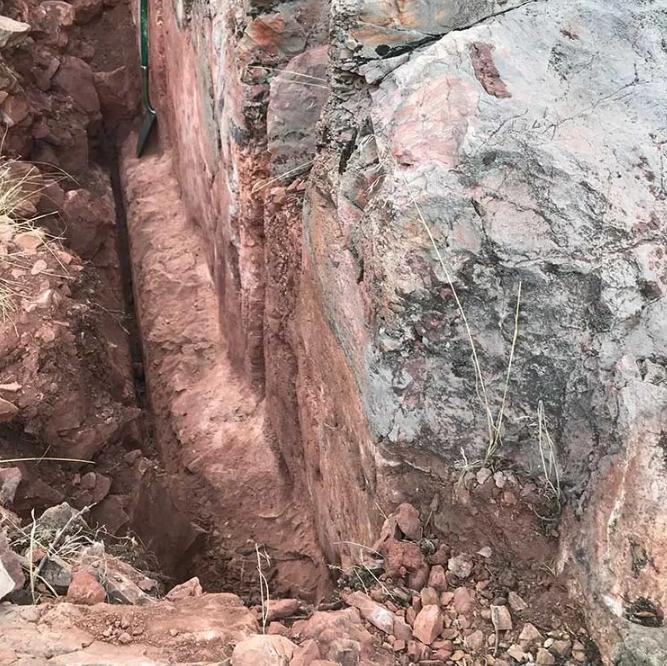
FIGURE 6:
On the left is a block diagram showing dinosaur track preservation. On the right dinosaur tracks observed in the field:

1) two dinosaur tracks preserved as casts at the base of a sandstone layer (white arrows);
2) an isolated ornithopod track.
descriptions and important paleontological discoveries from deposits of the Cedar Mountain and the Moreno Hill Formations. In Montana, and Idaho research teams have conducted several investigations on Cretaceous deposits of the Wayan, Blackleaf, and Frontier Formations. The investigations resulted in the collection of dinosaurian and non-dinosaurian bones, teeth, eggshells, footprints, and a rich fossil assemblage of plants. Perhaps, one of the most renowned and spectacular discoveries was first known burrowing dinosaur Oryctodromeus cubicularis, a small ornithopod dinosaur whose fossil bones can be found in deposits assigned to the Blackleaf and Wayan Formations. Outstandingly, the remains of this dinosaur were first discovered preserved in its own den with its babies! Fossilized bone remains have been the major target of Middle Cretaceous research. Trace fossils, such as trails and footprints, have been overlooked, limiting the research mostly to bone-bearing formations. In recent years, trace fossils have increasingly been
combined with bone remains in the inquiries of the Middle Cretaceous, and attention has moved toward less explored rocks assigned to the Frontier Formation of Montana.
What is a trace fossil? We have traces because an interaction occurred between an organism and a substrate. In nature this interaction can reflect different behaviors such as walking, feeding, swimming, or burrowing, and it generates sedimentary structures. For example, a walking animal may leave a series of footprints behind its path by stepping on wet mud or sand. These structures, like skeletal remains, can be preserved in the rock record as fossils and can offer substantial advantages in paleontological investigations. For instance, tracks and trails are easy to preserve in abundance because hundreds of them can be produced even by a single walking organism. In contrast,
» CONTINUED ON PAGE 23
P a l e o z o i c I m p a c t
C r a t e r F i e l d
N e w D a t e : A u g . 1 2 - 1 3 , 2 0 2 3



D o u g l a s , W y o m i n g
S e e m o r e i m p a c t c r a t e r s
t h a n a n y w h e r e e l s e o n
E a r t h ! D o n ' t m i s s t h i s
u n i q u e f i e l d t r i p l e d b y D r .
K e n t S u n d e l l .


the number of skeletal remains that the same organism can leave behind in its entire life are limited by anatomical constraints. For example, a dinosaur possesses a defined number of bones that we can potentially dig out from the ground, and they are not often preserved. Skeletal remains may be fragmentary or, in the worst scenario, not preserved at all, making paleontologists` job quite challenging. However, the same dinosaur may have left hundreds of thousands of traces over its entire life, and therefore, finding them preserved in the rock record is statistically more likely. Thus, if we would like to know more about where an ancient organism lived, how big it was, how fast it walked, and what other organisms co-inhabited the same environment it lived in, the statistics favor trace fossils. This is especially true when studying rock formations where bone material is scarce.
Although scarce in bone remains, the Frontier Formation in Montana has yielded a rich trace fossil record. Given its position in the sequence of rocks of North America, this formation is pivotal to understanding the Middle Cretaceous transition and the evolution of Cretaceous terrestrial ecosystems. Track and trail-bearing strata of the Frontier Formation are particularly extensive in southwestern Montana across Beaverhead and Madison Counties. Rocks assigned to this formation can be found in the Lima Pecks area, the western Centennial Mountains, and the upper Ruby River valley (Figure 3). However, the Frontier Formation is extensively exposed in the western USA and outcrops can also be found in Utah, Idaho, and Colorado. In general, these rocks are patchily distributed across grassy landscapes (Figure 4) thus research often requires lots of “wandering around looking for good exposures”. Recent explorations of fossil-bearing rocks in southwestern Montana provided a thorough geological description of the Frontier Formation of this area. The geological
investigations indicate that sediments composing these rocks were deposited in a broad, fluvial coastal plain setting. These environments were characterized by frequent flood events, formation of thin soil horizons, and frequent fluvial erosion and reworking.
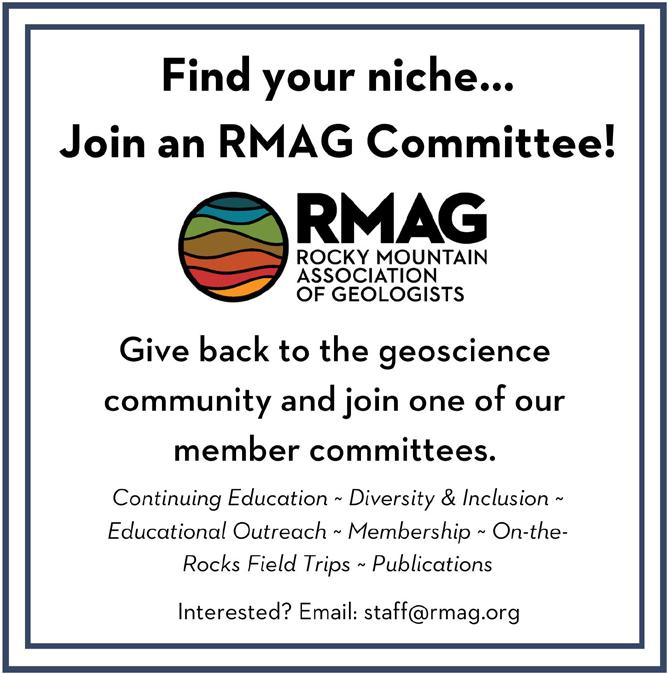
The Frontier Formation rocks are rich in burrows and trails of insects, nematode worms, and crustaceans who left their traces in the aquatic or water-saturated substrates of these ancient floodplains (Figure 5). Ponds and pools were also inhabited by freshwater turtles, crocodiles, snails, and bivalves as indicated by their bone fragments and shells. Moreover, the abundance of plant remains suggests that a lush vegetation characterized these Cretaceous floodplains. Dinosaurs left their footprints by walking on muddy or silty substrates that were subsequently filled with coarse sediments after a flood event (Figure 6). The nature of sediments filling the footprints allowed these dinosaur tracks to be preserved as sand casts, maintaining their tridimensional shape and, in some cases, preserving details of digits, claws,
» CONTINUED ON PAGE 25
The shell of the North American freshwater turtle Neurankylus collected from Frontier Formation deposits exposed in the Centennial Mountains. The scale bar is 10 cm.

Graduate student Zakaria Hannebaum preparing ornithopod dinosaur bones collected from the Frontier Formation at the Varricchio Paleontology Family Laboratory, Montana State University.

and scale impressions. Luckily for us, these morphological features are very useful for identifying the potential dinosaur producers. The Frontier Formation has yielded a substantially diverse dinosaur track record (Figure 7) assigned to duck-billed dinosaurs (ornithopods), armored dinosaurs (ankylosaurs), and carnivorous dinosaurs (theropods). This fossil record represents one of the most abundant so far reported from Middle Cretaceous deposits of North America. Combined with the less abundant skeletal remains collected, the trace fossils of the Frontier Formation interestingly reveal that the rich terrestrial and aquatic paleocommunity also included North American endemic organisms (Figure 8). This trend toward endemism likely started around 88 Ma ago and provides one of the oldest pieces of evidence that substantiates the establishment of a unique North American fauna at the end of the Cretaceous period.
The Frontier Formation fossils are unprecedented
and offer a picture of Middle Cretaceous terrestrial ecosystems never explored before. Presently, the research has been further expanded with the discovery of new track sites in Beaverhead and Madison Counties (Figure 9). Yet dinosaur tracks are only the tip of the iceberg, and new fossils have also been uncovered offering fossil material for future research endeavors. Notably, a wonderful consequence connected to the investigation of Frontier Formation rocks is that they have provided a variety of teaching and research opportunities. New skeletal remains are now under careful inspection by ungraduated and graduate students at Montana State University who are diligently preparing, curating, and examining fossil leaves, duck-billed dinosaur bones, and turtle shells (Figure 10). These fossils represent an important addition to the research of Cretaceous terrestrial ecosystems of North America and their study will surely offer future opportunities for students and scholars to expand our knowledge of the Middle Cretaceous.
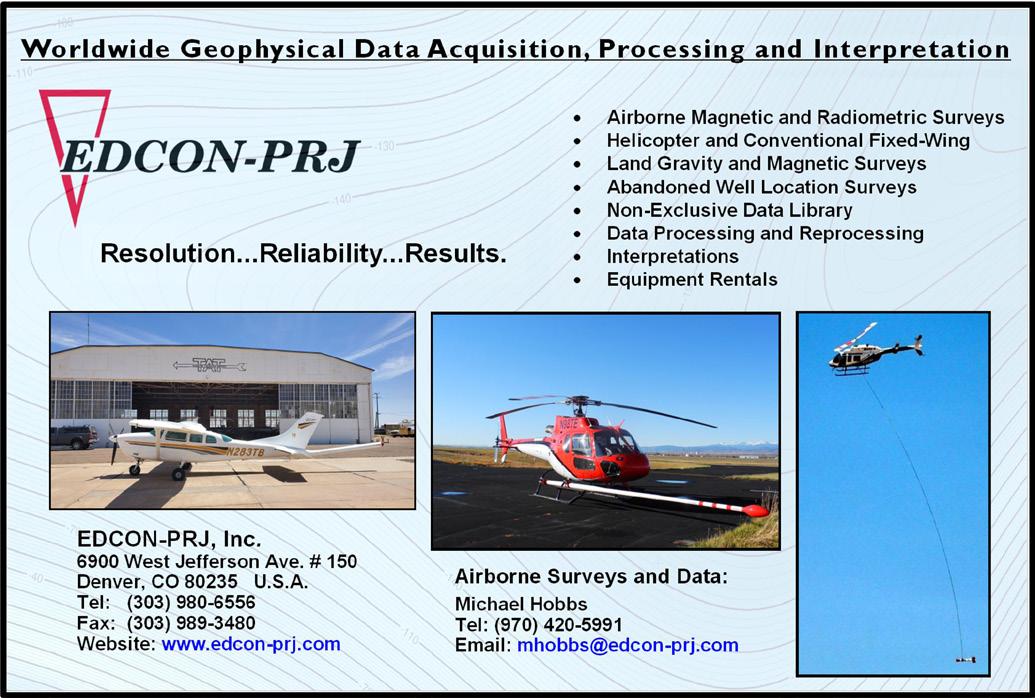

Speaker: Walter Nelson
Date: July 12, 2023 | 12:00 pm - 1:00 pm
Presenter: Walter Nelson, Integrated Energy Resources
Horizontal dry gas wells installed in the Niobrara-equivalent section of Mancos Shale in the northern San Juan Basin are now coming on at 25 million cubic feet per day. It has been 12 years since the first horizontal well in this play, yet the potential here is still being revealed. The potential for Haynesville-style consistency and volumes is very real, and those who are excited about it believe in both the Mancos and the significance of future natural gas demand. The 2 primary target units possess many characteristics of other successful unconventional reservoirs and are seen
as relatively calcareous zones (marls) amidst the shale. They are equivalent to the C and B chalks of the Niobrara Formation in the DJ Basin and can be referred to as the lower calcareous unit and the upper calcareous unit, respectively (also sometimes called the olive unit and the black unit by those familiar with WPX’s early investigations with TerraTek). These Cretaceous unconventional reservoirs are classic in every way, exhibiting porosity in fractures, calcareous pellets, and within the organic matter itself.
WALTER NELSON received a B.S. in Geology from Sewanee, an M.S. in Geology from the Colorado School of Mines, and studied business analytics at the University of Denver. He is originally from Houston, TX, and lived in Nashville, TN before moving to Denver, CO where he works as a business development geologist at Integrated Energy Resources. He is primarily focused on reservoir characterization and operations projects for private clients along with various development projects. Previous employers include Triad Environmental Consultants, Antero Resources, QEP Resources, Earth Science Agency, and Kimmeridge Energy. His recent research and work involve Cretaceous unconventional reservoirs, Paleozoic conventional/unconventional reservoirs, Williston Basin development, and natural gas technology.
NIGHT AT COORS FIELD
NIGHT AT COORS FIELD
NIGHT AT COORS FIELD
NIGHT AT COORS FIELD

FRIDAY, AUGUST 18TH @6:40PM
FRIDAY, AUGUST 18TH @6:40PM
FRIDAY, AUGUST 18TH @6:40PM
FRIDAY, AUGUST 18TH @6:40PM






COLORADO ROCKIES VS. CHICAGO WHITE SOX Tickets Starting at $35 Tickets Starting at $35 Register at www.rmag.org/RockiesGame2023
COLORADO ROCKIES VS. CHICAGO WHITE SOX Tickets Starting at $35 Tickets Starting at $35 Register at www.rmag.org/RockiesGame2023
COLORADO ROCKIES VS. CHICAGO WHITE SOX Tickets Starting at $35 Tickets Starting at $35 Register at www.rmag.org/RockiesGame2023
COLORADO ROCKIES VS. CHICAGO WHITE SOX Tickets Starting at $35 Tickets Starting at $35 Register at www.rmag.org/RockiesGame2023




HYBRID LUNCH TALK

Speaker: Emilie Gentry
Date: August 2, 2023 | 12:00 pm - 1:00 pm
Fluid flow in geothermal reservoirs is an essential component to an open loop geothermal system and is characterized by fluid composition and permeability. The control of fault zones on the fluid flow and hydraulic conductivity in the subsurface is often underestimated when evaluating a reservoir. Permeability in fault zones is influenced by various scales of structural geology from tectonic setting to
regional faults to grain structures. In this talk, the role of fault zones in geothermal fields and the methods used to characterize fault zones will be discussed. Case studies in Wyoming and Rico, Colorado will be reviewed to demonstrate how a thorough understanding of permeability distribution in a geothermal reservoir is crucial for effective exploration, development, and maintenance of a system.
EMILIE GENTRY is a Senior Geothermal Geoscientist with TEVERRA providing geological mapping, resource assessment, and geothermal conceptual model development. Her technical expertise is structural and subsurface geology with experience in geologic research and oil and gas development, exploration, reservoir characterization, and regulatory affairs management. Emilie uses her knowledge in faults and structural geology and her experience in oil and gas to address major challenges in the geothermal industry and bring opportunity to the larger energy industry. She earned her B.Sc. in Geological Sciences from the University of Texas at Austin and her M.Sc. in Geology at Colorado School of Mines. Emilie is an active member of Women In Geothermal (WING) and was part of the WING Future Leaders Cohort.

My early post high school education was focused on my interest in auto mechanics. Much to the dismay of my parents, I would take apart mechanical items and put them back together just to see how they work. While wrapping up an AAS Degree in Auto Mechanics, I met a geology student who was a summer intern in my mother’s office at the Bureau of Indian Affairs Minerals Division in Denver, working on a Brooks Range thesis. His description of field work in Alaska and goal to work in the petroleum industry changed my plans I decided to pursue a geology degree at Fort Lewis College in Durango, Colorado, and hopefully a career in the petroleum industry.
I was born in South Dakota and spent most of my elementary, middle, and high school in Albuquerque, New Mexico.
My first job was in 10th grade flipping burgers after school and on weekends. My first job after receiving my BS Degree in Geology in 1988 from Fort Lewis College was as a geologic tech in Denver. My first job as a petroleum geologist was with Anadarko Petroleum in Houston after I completed a MS Degree in Geology at the University of Kansas in 1996.
I am very grateful to my coworkers at Anadarko Petroleum in Houston, where I spent 1996-2004 as an operations geologist learning the business in
Midcontinent Basins and as a development geologist working mature GOM projects above salt. I moved on to Apache Corporation as a Permian Basin exploration geologist from 2004-2006 in Tulsa. Then I had the opportunity to move on from large independent oil companies to a unique small private oil and gas company wholly owned by the Southern Ute Indian Tribe, Red Willow Production Company, in Ignacio, Colorado, where I have spent the last 18 years. Red Willow has allowed me the opportunity to further my career from a staff geologist to a couple of leadership positions, geology manager and now the Onshore Subsurface Manager. As a member of the Cheyenne River Sioux Tribe, I especially am grateful to work for Red Willow Production Company, the most successful Tribal owned oil and gas company in the United States.
My present position as the Onshore Subsurface Manager provides me an opportunity to collaborate and lead a staff of geologists, geologic tech, and
RMAG’s Diversity and Inclusion Committee is featuring a monthly Member Corner. We hope you’ll enjoy learning about the diverse community of Earth scientists and wide variety of geoscience disciplines that comprise our membership. If you would like to appear in an upcoming column, or if there is someone you would like to nominate, please contact staff@rmag.org
Are a young geologic professional, student, or transitioning professional seeking career advice & support?
Are you a seasoned geologic professional (510+ years) interested in helping early career & students expand their networks & grow their career?

APPLY TO BE AN RMAG
MENTEE/MENTOR!

reservoir engineer as we evaluate investment opportunities for Red Willow’s operated and non-operated projects in the San Juan and Delaware Basins. A management position was initially a career goal of mine. The last few years working with my staff have been so rewarding as I have learned so much from their expertise and varied work styles. Collaboration is the key to success in my present position.
Don’t get too focused on a small area of investigation; step back and think of how your area of investigation fits into a larger system and keep a list of your assumptions. It’s in these assumptions where solutions can be found.
If you can, work first for a major or large independent. I worked with a great group of petroleum professionals at Anadarko Petroleum who set high standards for geologic investigations and emphasized teamwork and collaboration.
The barriers I had to overcome were not unique compared to many students of today. I was a non-traditional independent student when I began my college career at 21. Luckily, great friends, who allowed me sleep on a couch for a semester because I couldn’t afford rent, and extended family who also helped were essential to achieve my BS degree. Great people and organizations that along the way provided opportunities for internships, summer work, and teaching assistantships at graduate school, plus encouragement from my thesis advisor at the University of Kansas, were keys to landing my first position as a geologist at Anadarko.
I am inspired every time I attend AAPG and other industry conferences. I enjoy seeing and hearing about all the great work that professional geologists from all walks of life are doing in areas and fields of study that make up the petroleum industry.
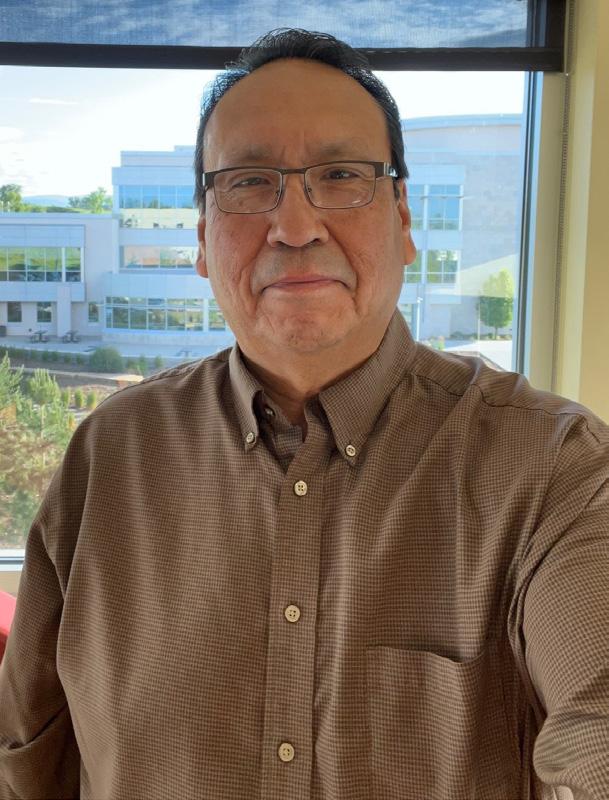
I first pursued an interesting and well-paying job as a young man. With time, I developed an appreciation of the many colleagues I’ve met along the way and most of all a love of geology.
I did finish my AAS Degree in Auto Mechanics and I completed a full restoration over several years of a 1979 Camaro in my garages in Houston and Tulsa. I’m now building a shop to house my many tools and machines as I have many toys to maintain and fix. My other passion, Kansas Jayhawks basketball, is still going strong, as my wife will attest to as she heads to another room during the games.
I enjoy non-fiction history. I most recently read “The Admirals: Nimitz, Halsey, Leahy, and King – The Five Star Admirals Who Won the War at Sea” by Walter Borneman.
Richard (Doug) Elmore
is an Emeritus Professor at the University of Oklahoma in Oklahoma City, Oklahoma.
Karl Johnson is from Arvada, Colorado.
Mitchell Sherry is an Intern at SM Energy in Golden, Colorado.
Sarah Verghese
is an Operations Geologist at Occidental Petroleum in Denver, Colorado.
JULY 11, 2023
RMAG Women’s Group Coffee.
DERL- 730 17th Street, B-1. 10 AM-11 AM.
JULY 11-12, 2023
Women in Oil and Gas Leadership Conference.
JULY 12, 2023
RMAG Luncheon. Speaker: Walter Nelson. “Pore Styles and Horizontal Drilling Targets in Niobrara-Equivalent Mancos Shales, Northern San Juan Basin .” Online or Inperson at Maggiano’s, Denver. 12:00 PM-1:00 PM.
JULY 15, 2023
On the Rocks-Stories in Stone
The Rocks that Built Denver.
JULY 21, 2023
RMAG Happy Hour. 2990 Brewery Lane.
AUGUST 2, 2023
RMAG Luncheon.
RMAG’s Educational Outreach committee wants to create a collection of Colorado rocks that can be paired with the Colorado geological map. The committee will use these rocks as an educational tool to teach elementary, middle, and high school students about the geology of Colorado, geological processes, and Colorado mineral resources.

While you are on your summer vacations to the many wonderful areas in Colorado, please consider picking up rocks for our collection. We ask you note where you collected the rocks and the formation name. ROCKD is a great app that uses your location and geological maps to “map” the formation under your feet. Keep in mind to collect rocks where it is allowed.
Some examples of rocks from formations that we would love in our collection:
• Maroon
• Leadville
• Chinle
• Green River
• Navajo/Nugget
• Entrada
• Lodore
• Dakota
• Sawatch
• Igneous and Metamorphic rocks
• Wasatch
• Volcanics (San Juan – Flat Tops)
When your rocks are ready, contact us at edoutreach@rmag.org
Thank you!


Why contribute?
Expanded geologic focus:
Why contribute?
• Reach
• Quarterly
• Permanent
Expanded geologic focus: Entire greater Rocky Mountain West Texas and New Mexico -Continent

Expanded geologic focus:
• Entire greater Rocky Mountain area of North America
• Quick
• Every
• West Texas and New Mexico to northern British Columbia
• Entire greater Rocky Mountain area of North America
• Reach a broad industry and academic audience
• Great Plains and Mid-Continent region
• West Texas and New Mexico to northern British Columbia
• Quarterly peer reviewed journal
• Great Plains and Mid-Continent region Why contribute?
• Reach a broad industry and academic audience
• Permanent archiving includes AAPG Datapages
• Quarterly peer-reviewed journal
• Quick turn around time
https://www.rmag.org/publications/the
• Permanent archiving includes AAPG Datapages
• Every subdiscipline in the geosciences
• Quick turn-around time
https://www.rmag.org/publications/the
• Every subdiscipline in the geosciences
Expanded geologic focus:

area of North America
• Entire greater Rocky Mountain area of North America
northern British Columbia region
• West Texas and New Mexico to northern British Columbia
• Great Plains and Mid Continent region
Email: mgeditor@rmag.org
https://www.rmag.org/publications/the -mountain-geologist/

production company confluenceresources.com Confluence Resources is an upstream exploration and production company confluenceresources.com


